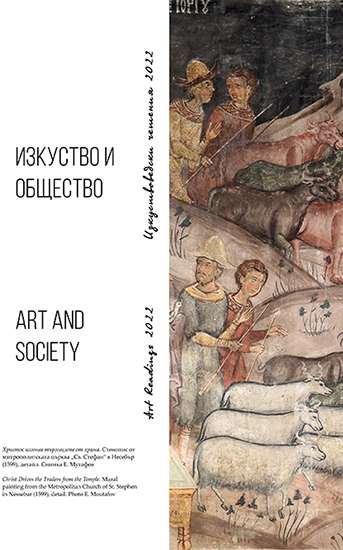„Трако-кимерийски“ находки или апликации за конска амуниция в стил Басараби?
“Thraco-Cimmerian” Finds or Appliqués for Horse Harness in Basarabi Style?
Author(s): Ruslan StoychevSubject(s): Fine Arts / Performing Arts, History of Art
Published by: Институт за изследване на изкуствата, Българска академия на науките
Keywords: Thraco-Cimmerian finds; horse amunice; bronze appliqués; Basarabi ceramic style
Summary/Abstract: This essay begins with an introduction about the bronze appliqués belong to the so-called “Thraco-Cimmerian” tradition. The items in this group are made of copper alloy, have the shape of an equilateral cross, and are fitted with a strap attachment at the back. There are no sufficiently clear examples in the local manifestations of the artistic tradition of the preceding ages to assume the role of their predecessors, and at the same time the comparative material is scattered over a very wide geographical area, it is only natural that questions of genesis and influences in early equestrian ammunition appliqués assume particular importance. To date, on the territory of modern Bulgaria, the lower chronological limit of this phenomenon is defined by the examples from the villages of Beli Izvor, Tarnava and Tsarevets (formerly Vlasko Selo), Vratsa region (Figs. 1. 1-3), as well as by the headstone from Novgrad, Svishtov region (Fig. 2), which most researchers refer to the period 7th–6th centuries BC. The examples cited undoubtedly suggest a far closer relationship between the appliqués from the territories of present-day Northwestern Bulgaria and Southern Romania with those of Central Europe, which is confirmed by observations in some of the bridles, but they also raise the question of the countries in contact. In terms of style, it is evident that several different artistic manifestations are included in the decorations for horse ammunition of the group of interest, ranging from spiral motifs on the Novgrad and Bujoru nozzles, to hemispherical buttons and abstract elements, to appliqués in the form of an equilateral cross. To regard them as the products of a distinctive ‘style’ therefore seems particularly ambitious given that the early phase is altogether lacking and the empirical basis for comparison is limited to the material that remains in the ceramic repertoire. If, however, we turn to the ceramics in particular, the similarity between the appliqués from Beli Izvor, Tarnava and Tsarevets, and the ‘Maltese cross’ motif of the Basarabi style decorated vessels, clearly emerges.
Journal: Изкуствоведски четения
- Issue Year: 2022
- Issue No: 1
- Page Range: 9-32
- Page Count: 24
- Language: Bulgarian
- Content File-PDF

